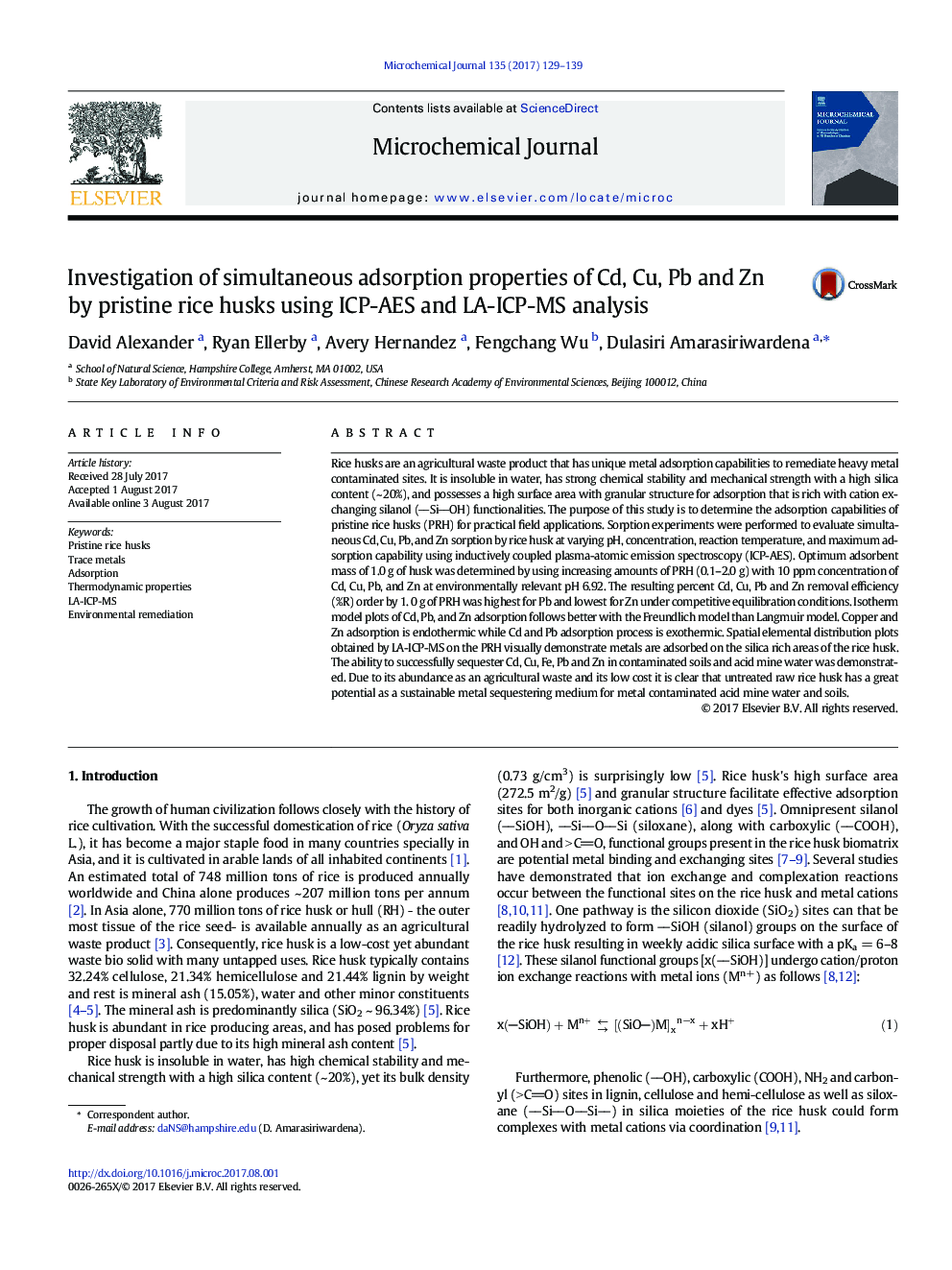| Article ID | Journal | Published Year | Pages | File Type |
|---|---|---|---|---|
| 5139227 | Microchemical Journal | 2017 | 11 Pages |
Abstract
Rice husks are an agricultural waste product that has unique metal adsorption capabilities to remediate heavy metal contaminated sites. It is insoluble in water, has strong chemical stability and mechanical strength with a high silica content (~Â 20%), and possesses a high surface area with granular structure for adsorption that is rich with cation exchanging silanol (SiOH) functionalities. The purpose of this study is to determine the adsorption capabilities of pristine rice husks (PRH) for practical field applications. Sorption experiments were performed to evaluate simultaneous Cd, Cu, Pb, and Zn sorption by rice husk at varying pH, concentration, reaction temperature, and maximum adsorption capability using inductively coupled plasma-atomic emission spectroscopy (ICP-AES). Optimum adsorbent mass of 1.0Â g of husk was determined by using increasing amounts of PRH (0.1-2.0Â g) with 10Â ppm concentration of Cd, Cu, Pb, and Zn at environmentally relevant pHÂ 6.92. The resulting percent Cd, Cu, Pb and Zn removal efficiency (%R) order by 1. 0Â g of PRH was highest for Pb and lowest for Zn under competitive equilibration conditions. Isotherm model plots of Cd, Pb, and Zn adsorption follows better with the Freundlich model than Langmuir model. Copper and Zn adsorption is endothermic while Cd and Pb adsorption process is exothermic. Spatial elemental distribution plots obtained by LA-ICP-MS on the PRH visually demonstrate metals are adsorbed on the silica rich areas of the rice husk. The ability to successfully sequester Cd, Cu, Fe, Pb and Zn in contaminated soils and acid mine water was demonstrated. Due to its abundance as an agricultural waste and its low cost it is clear that untreated raw rice husk has a great potential as a sustainable metal sequestering medium for metal contaminated acid mine water and soils.
Related Topics
Physical Sciences and Engineering
Chemistry
Analytical Chemistry
Authors
David Alexander, Ryan Ellerby, Avery Hernandez, Fengchang Wu, Dulasiri Amarasiriwardena,
